Search

Publications
The Baku – Tbilisi – Kars Railway and the Zangezur Corridor: Russia’s Interest in the New Main Communication Lines of the South Caucasus

A new, third in succession, discussion of Azerbaijani President Ilham Aliyev with representatives of international thinktanks was held at ADA University (Diplomatic Academy) in Baku.
Direct networking (similar to the Valdai forum format) with political scientists and experts dealing with regional issues allows Ilham Aliyev to articulate new details of Azerbaijan’s international agenda. The title of the most recent conference, «Along the Middle Corridor: Geopolitics, Security and Economy», signaled a focus on the development of international transport corridors via the territory of Azerbaijan.
Ilham Aliyev made several important statements.
On the Baku – Tbilisi – Kars (BTK) transport corridor: New investments in the project to expand the Georgian section of the BTK route will exceed $100 million. The aim is to increase the capacity of the railroad to 5 million tons of cargo a year.
As a reminder, BTK was commissioned into operation in October 2017. Within the framework of the project, a 98-km railroad, Kars – Akhalkalaki, was built, a 68-km section of which passes through Turkey, and another 30 km goes via Georgia. In addition, a 183-km section, Akhalkalaki – Tbilisi, was upgraded. Works on the Georgian part of the highway were financed by Azerbaijan, which allocated two preferential loans to Georgia totaling $775 million.
In 2021, the volume of freight traffic on that main line reached 476,900 tons (a 2.1-fold increase compared to 2020). Notably, overall cargo turnover across the Georgian railway network has seen a major upswing recently, with 11 million tons of cargo transported in the first nine months of 2022 alone (for the sake of comparison, 12 million tons was carried over the entire year in 2021).
On the works in the Zangezur Corridor: Works in Azerbaijan (a 110.4-km railway line, Goradiz – Agbend, which has both a strategic and economic importance) will be completed by Q2 2024. Its foundation stone was laid by President Ilham Aliyev on February 14, 2021.
By now, 78% of the design work and 38% of the construction has been completed. Naturally, the pace of work slows down in wintertime.
Among the important statements made by Ilham Aliyev on this project, the following is worth to be quoted verbatim: «Armenia should be the party most interested in the development of the corridor, as it will be able to get vast opportunities by providing a railway route between Armenia and Iran, which does not exist now and is unlikely to emerge, because it would take at least $3 to $5 billion to build a railway route through underground tunnels on the border section between Armenia and Iran. Who will invest that kind of money in the project in this case? No one! Therefore, the only possibility for Armenia to have a railway route to Iran is through Azerbaijan, and [to have] a railroad to Russia, also through Azerbaijan. The Zangezur Corridor serves Armenia’s interests more than ours, because we use the Baku – Tbilisi – Kars route as a link with Turkey, [as we do] seaports in Georgia, and the Iranian territory to connect with Nakhchivan. Nakhchivan also borders on Turkey».
Interestingly, on the same day, a Roadmap on the Development and Operation of the Middle Corridor for 2022-2027 was signed in Aktau, Kazakhstan, at the level of transport ministers of Azerbaijan, Kazakhstan and Turkey.
The main railway section of the corridor in the South Caucasus is precisely the Baku – Tbilisi – Kars line, and future prospects of that major corridor are associated with the development of the Zangezur Corridor, which would create an additional junction with the Soviet-era railway line that takes South Caucasus lines all the way to the Persian Gulf (through the railway junction at Julfa, Nakhchivan Autonomous Republic).
Therefore, the Zangezur Corridor is taken into account in the economic planning of the involved transport ministries and in relevant financial analysis as a section of the International North – South Transport Corridor ( INSTC). Earlier forecasts on total investments of the INSTC participants in the mainline infrastructure and logistics facilities, published by Eurasian Development Bank (EDB), estimate the required investments of Azerbaijan at $2.79 billion, and those of Armenia at $1.85 billion (the bank’s data does not provide a breakdown on investments in the Zangezur Corridor as a separate route).
Russian Interest in the BTK Project
Arrangements on the operation of this mainline were formalized in 2019. Russian Railways Logistics and Turkey’s logistics operator Pasifik Eurasia Logistics (a subsidiary of Pasifik, a construction holding company) signed an agreement to establish a joint venture to develop logistics delivery routes along the Baku – Tbilisi – Kars railway. A memorandum to that effect was signed at a meeting of Oleg Belozerov, Chief Executive Officer and Chairman of the Executive Board, Russian Railways, with the CEOs of railway companies of Turkey and Azerbaijan in Ankara, Turkey.
The first container train from Turkey to Russia via BTK arrived in early February 2021. ADY Express, a subsidiary of Azerbaijan Railways, delivered 780 tons of Russian grain and 480 tons of wheat bran to Turkey. There were also separate deliveries of Turkish textiles and foodstuffs to Russia. The year 2022 saw an upturn in container shipments in the Russian direction, with the Urals and the Far East as final destinations.
Characteristically, one of the main users of BTK is Magnitogorsk Iron and Steel Works (MMK). On a regular basis, it supplies raw materials and part of its products to its own facility at the port of Iskenderun in southeastern Turkey (MMK Metalurji resumed the output of rolled steel in 2021).
The interests and objectives of Russian Railways along this route can be summarized as follows:
1. Development of BTK as an additional artery in the cargo turnover between Russia and Turkey (in total, it already exceeds 20 million tons per year, with the main focus on the port of Novorossiysk).
Russian Railways is working towards rerouting Turkish cargo from the sea and highways to its own network, if possible.
In the longer term, there is an objective to expand Russian exports to third country markets. At this stage, development of BTK can be regarded as a Russian-Turkish project aimed at economic reinvigoration of the eastern part of Turkey, currently underdeveloped in terms of communications. Russian timber, coal and wheat will first come to that region, and then, with further transshipment to Mediterranean ports, handling of that cargo will require expansion of the terminals and warehouses along the route. Faced with the prospect of receiving Russian deliveries, the Turkish side will be confronted with the task of making major improvements in the communications further inland from Kars. (Currently, up to 80% of Turkey's railway lines are single-track ones. High-speed traffic begins only from Ankara westward, towards Istanbul.)
2. The need to widen the wheelbase, a challenge for a wagon-building enterprise.
Wheelset changeover at Kars does not fully address the problem of the break between the Russian 1520-mm gauge and the European 1,435-mm gauge, as the distance between the freight car body and the station platform does not allow a 1,520-mm train to go through a number of sections in Turkey and Iran’s inland even on a 1,435-mm bogie. By and large, a wagon-building factory is needed, in order to produce additional wagons catered to the standards of the railroads of Turkey and Iran. In this regard, possible commissioning of a wagon-building plant in Sumgait, Azerbaijan, is discussed now and then.
The investments mentioned by Ilham Aliyev will probably be channeled to the project of a 1,520-mm track gauge to Kars from the border with Georgia, including the construction of a customs and a warehouse terminals. Once the project is completed, the trains will not be delayed at the Turkish-Georgian border, but will go directly to the country, where the consignees will decide on their distribution. A similar terminal for the Turkish track could be built in Georgia. Azerbaijan has actually implemented the same thing in Astara, Iran, a few kilometers from the border, where a large terminal for cargo handling, including grain, has been built.
Russian Interest in the Zangezur Corridor
For a number of reasons, development of the Zangezur Corridor was overshadowed by the political confrontation caused by a systemic crisis of the Armenian political field. The agenda of the trilateral working group on transport and communications, which consists of deputy prime ministers of Russia, Armenia and Azerbaijan, was put on the back burner.
Meanwhile, development of this route is probably a focal subject for Russia's economic interests in the region in the post-conflict period. The fact is that the opening of the Zangezur Corridor and smooth operations of the Julfa railway hub would allow Russia not only to adapt effortlessly to the new realities of the hybrid war with the Euro-Atlantic alliance, but also to translate its macroeconomic interests in Armenia and Azerbaijan to a new and higher level, in particular:
- To restore end-to-end rail communications to the Persian Gulf;
- To unlock the potential of Russia's South Caucasus Railway (SCR), currently “trapped” inside Armenia;
- To use the future growth of the Armenian and current growth of the Azerbaijani economy to expand transregional trade and industrial integration projects along the INSTC;
- To increase cargo flows with Turkey and Azerbaijan, due to a growth of the regional industrial base (from agriculture to the mining sector).
Now let us try and discuss these items in more detail.
By and large, the launch of the Zangezur Corridor will offer a solution to the problem of Russian exports to the Indian Ocean basin. Naturally, it does not mean that the Persian Gulf will see flows of grain, timber, metals, fuel and lubricants, Russia’s main export commodities, in a matter of three years. But once the corridor has been opened, and even before that, while it is still being launched, projects of new powerful port terminals will emerge, which will be competitive and alternative to marine shipments across the Caspian Sea.
The slowdown in the development of the INSTC in the Iranian part of the route in previous years was caused by a range of traditional factors inherent in Iranian governance and also by a delay in the implementation of international agreements that have not come into full force because of the risk of sanctions that could be imposed on businesses, insurance firms and banks. There are still difficulties in overcoming these factors, and the situation is becoming even more complicated – this time because of anti-Russian sanctions.
Iran estimates investments in the construction of the Qazvin – Rasht – Astara railway, which could exceed 350 km, at about $400 million. The most problematic part is the Rasht – Astara section (172 km), where full-scale construction is still at the initial stage. So far in their trilateral negotiations, Russia, Azerbaijan and Iran have failed to arrive at a clear-cut model for future operation of the route. In return for investments, Moscow and Baku would like to get a long-term concession. Tehran consents only to balanced admission of all carriers, regardless of the respective amounts of investment. That said, Iran is ready to purchase the equipment and the rolling stock.
Naturally, the Zangezur Corridor will also require investments, and, afterwards, upgrade of the existing mainline to the South, subject to relevant arrangements with Tehran. However, it would be easier to do this with the railroad already in operation in Iran than with a new one that has not been built yet.
The estimates made by a group of economists in a 2014 report commissioned by International Alert, «Rehabilitation of Railways in the South Caucasus: Assessing the Economic Impact», cited the following figures of the expected costs of restoring the Kars – Gyumri – Nakhichevan – Megri – Baku railway corridor: Total costs would probably amount to $433.7 million, of which $277.1 million would be needed to restore sections in Azerbaijan, $106 million to revive parts of the road in Armenia, and $52 million to refurbish the railway lines in Turkey.
These figures take account of the railway sections that require running repairs and partial overhaul, including the construction and upgrade of various facilities and traffic support mechanisms. Estimates on newly constructed sections of the railway and sections where reconstruction and renovation of the power supply system, as well as of the signaling and communication systems, are required were also incorporated in the analysis.
At the same time, one issue, waterlogging of a section near the Khudafarin Dam, has remained unclear, and that may require additional construction. However, even if the cost estimate of the reconstruction of the South Caucasus corridor should increase, taking into account the current prices of the works and rising costs of raw materials, it could be commissioned faster than a larger-scale construction project in Iran. In addition, the very fact of having two railway segments of a corridor running to the Persian Gulf in the future would have a positive effect on the development of regional economies.
Estimates of the Regional Cargo Traffic
Analyzing the export-import profile of Armenia and Azerbaijan, we can conclude that their industrial and trade cooperation in the future could be feasible with respect to three groups of goods, namely textiles and knitted products (main export destinations are Russia and the EAEU), agricultural processing (exports going to Russia), copper ore processing and nonferrous metal ore processing (exports to Russia and China). Each of these venues should be discussed separately.
Once again, we should note that the key facility that could help restore these links in the future is the railway junction at Julfa, which connects flows within the INSTC along the routes of Russia—Iran, Iran – Turkey, and Iran – Armenia – Georgian ports.
Extrapolating the current figures of trade and economic relations in the region, it is possible to forecast the following parameters of their growth under the scenario of opening and development of the mainline infrastructure:
- Current annual cargo turnover between Armenia and Iran could grow from 640,000 tons per year to 1 million tons (and trade turnover could increase to over $1 billion per year);
- Extra cargo could be brought in, in addition to the current 0.3 million tons of shipments from Iran to Georgia, currently moved by road transport;
- The amount of the cargo transported by Russia’s SCR could also expand. In 2020, it was about 3.2 million tons. Of this volume, part of the export/import freight flows could move directly from Turkey via Gyumri. By the way, before the Second Nagorno-Karabakh War that took place in 2020, the SCR had predicted that Armenia’s turnover with Turkey could reach 1 to 2 million tons, subject to the opening of the border. This is currently hindered by the trade sanctions imposed by Armenia on Turkish imports;
- International Alert estimates that about 0.5 million tons of shipments could go from Azerbaijan to Armenia during the first stage of the border opening; in particular, there is a possibility of a rapid revival of supplies of Azerbaijani fuel and lubricants and rerouting of a substantial part of Russian deliveries to Armenia from the Trans-Caucasus highway through the Georgian passes to the rail, across Azerbaijan;
- Also, it is necessary to take into account about 1 million tons of cargo sent annually from Azerbaijan’s mainland to the Nakhchivan Autonomous Republic.
Finally, the prospects for Russia’s (essentially, transregional) shipments through the corridor should be analyzed separately. Given that it would be an element of the new system of transcontinental transportation of Russian cargo to the South, it would contribute to the formation of new regional trade and production cooperation links, which would allow handling a total of 5-7 million tons along this route in the mid-term.
Thus, both the expansion of the Baku – Tbilisi – Kars railway and unblocking and vigorous construction at the conjunction of the Zangezur Corridor and the INSTC routes is very much in the interests of the Russian economy.







